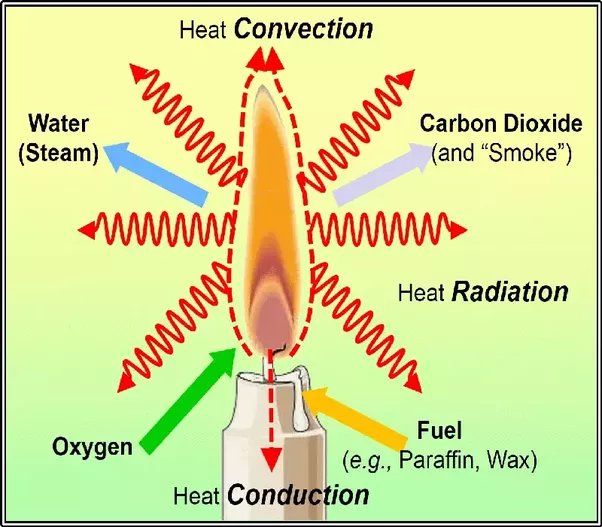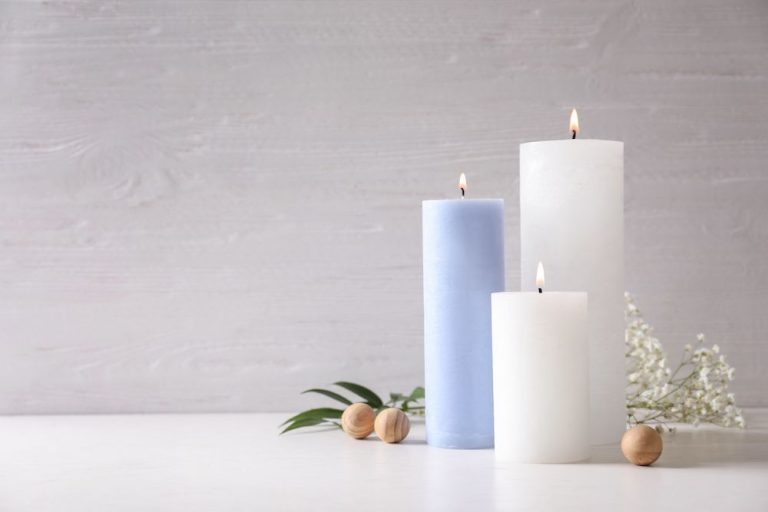How Do You Light A Candle With A Wood Wick?
Wood wicks are a special type of candle wick made from natural wood fibers. Unlike regular cotton or paper wicks, wood wicks crackle and pop when lit, creating a pleasant fireside ambiance. The wood also burns slowly and cleanly without releasing any unwanted scents or chemicals. Wood wicks have multiple strands that curl as the wick burns down. This allows more airflow to the flame, resulting in a brighter burn with less smoke and more complete wax consumption.
Because of their unique structure, wood wicks do not bend over into the wax pool as they burn. This helps prevent tunneling, where a well forms in the center of the candle. Wood wicks also leave less unburned wax on the sides of the container. Overall, candles with wood wicks provide a superior burn experience and pleasing sensory effects.
Materials Needed
Lighting a wood wick candle requires just a few simple materials that most people have on hand. The primary items needed include:
-
Wooden wick candle – The most essential item is a candle with a wood wick, rather than a typical cotton wick. Wood wicks are made from materials like bamboo, wood chips, or natural fibers. Wood wicks allow the candle to make a natural crackling sound when burning.
-
Matches or lighter – A pack of matches or a lighter for a gas stove will provide the flame needed to light the wood wick. Both matches and lighters produce a strong flame to initially light the wick.
Make sure you have these materials available before attempting to light your wood wick candle for the first time. It also helps to have the candle in a sturdy holder on a flat, heat-resistant surface when lighting.
Prepare the Wick
Before lighting a wood wick candle, the wick needs to be properly trimmed. Untrimmed wicks can result in soot, excess smoke, or a too-large flame. The general rule is to trim the wood wick to 1⁄4 inch above the wax before lighting. This allows the wick to properly absorb and distribute the wax while burning.
Use the following steps to trim a wood wick candle before first use:
- Use a wick trimmer or small nail clippers to trim the wick.
- Trim the wick straight across to leave a clean edge.
- Aim for 1⁄4 inch long above the wax.
- Trim carefully to avoid damaging the wood core of the wick.
- Inspect the wick to ensure no wood fibers are sticking out along the top edge.
A properly trimmed wick at the right height is key for successful lighting and a clean burn. Avoid trimming too short which can lead to drowning the wick or trimming unevenly which can cause flaring.
Lighting the Wick
Lighting a wood wick candle requires holding a flame to the tip of the wick until it ignites. Using either a long match or lighter, apply the flame directly to the very top of the wick so it makes direct contact. The wood wick may take a few extra seconds to catch compared to a regular cotton wick. Be patient and keep the flame there until you see the wick start to glow orange and burn on its own. Once lit, you can blow out the match or lighter and set it aside. The wood wick should continue burning once lit. Avoid lighting the wick in multiple spots, as this can cause it to curl and prevent even burning. Focus the flame on just the very tip until fully lit.
Maintaining the Flame
Once the wood wick is lit, it’s important to allow the wax to liquefy and pool before blowing out the flame. The wood wick requires wax to soak into the fibers in order to stay lit. If you blow out the flame too soon, the wax may not have saturated the wick enough for it to stay lit when relighting.
As the wax pool develops, make sure the wax melts all the way to the edges of the container before blowing out the flame. This ensures even burning and full usage of the candle. Allow at least 1 hour of burn time for a standard container candle before extinguishing the flame.
You’ll know the wax is fully liquefied when the entire top surface is molten and fluid. The wick should be flexible and laying down in the wax pool at this point. Gently test the wick flexibility by touching it with a flameproof object prior to blowing out the flame. If the wick feels stiff or rigid, allow more time for the wax to melt.
Once the wax is pooled and the wick is flexible, you can safely blow out the flame. The wood wick will be thoroughly saturated at this point, allowing it to relight cleanly for the next use.
Relighting the Candle
If the candle goes out on its own, you’ll need to let it cool down before attempting to relight it. The wick and wax need time to solidify and harden again before exposing it to an open flame. Rushing to relight a candle that just went out can cause the wick to smolder and produce smoke or cause the candle to tunnel down the center.
Wait at least 1-2 hours before attempting to relight the candle if it has gone out on its own. This gives the wax enough time to reset and solidify. Test the wax with your fingers – if it still feels soft or warm, wait longer before relighting. The candle and wick need to be completely cool to avoid issues.
Once the candle is cool to the touch, follow the normal lighting instructions. Trim the wick if needed, hold the flame to the tip of the wick until it ignites, then let it burn for a minute or two before blowing it out. This will allow the wax to melt and coat the wick before regular use.
With the proper cool-down time, you should then be able to relight and enjoy your wood wick candle without any issues.
Safety Tips
When lighting and burning a wood wick candle, it’s important to keep safety in mind. Here are some tips to burn your candle safely:
- Always keep a burning candle within sight. Never leave a burning candle unattended.
- Keep candles out of reach of children and pets.
- Place candles on a stable, heat-resistant surface away from drafts and vents. Drafts can cause the flame to tunnel down into the wick and candle, increasing the risk of flare-ups.
- Keep candles away from flammable items like curtains, upholstery, bedding, papers, books, and clothing.
- Keep a burning candle away from drafts that may cause the flame to flicker and tunnel. A draft could blow the flame into the wood wick causing the wick to flare up.
- Trim wick to 1⁄4 inch before lighting to avoid smoke and excessive flaming.
- Burn candle in open air and provide adequate ventilation. Wood wicks give off more smoke than standard wicks.
- Allow melted wax to completely pool out before relighting a candle.
With some basic safety precautions, you can safely enjoy your wood wick candle and its crackling, fireside ambiance.
Troubleshooting
Lighting wood wick candles can sometimes run into issues like tunneling and smoking. Here are some tips for troubleshooting common problems:
Fixing Tunneling
Tunneling is when a hole forms in the wax around the wick, causing the flame to drop down inside the candle. This makes it harder for the wick to melt the wax. To fix tunneling:
- Trim the wick to 1⁄4 inch before lighting. Long wicks can overheat and tunnel.
- Make sure not to leave the candle burning for more than 2-3 hours at a time. Long burn times can cause tunneling.
- Pour off the top layer of melted wax so the wick is exposed again.
Preventing Smoking
Wood wicks sometimes begin smoking and giving off more soot. To prevent this:
- Trim the wick to 1⁄4 inch before each lighting to remove any built up carbon.
- Make sure the wick is centered in the wax pool as it melts.
- Avoid drafts which can cause the flame to smoke.
Following these troubleshooting tips will help ensure your wood wick candle burns cleanly and evenly down to the bottom.
Storing Wood Wick Candles
Proper storage is important for preserving your wood wick candles when they are not in use. Here are some tips for storing them correctly:
Store unused wood wick candles in a cool, dry place away from direct sunlight and heat sources. Fluctuations in temperature can cause the wax to sweat or become misshapen. A pantry, closet or basement are ideal storage spots.
Keep the wick trim and straight when storing candles. You can use wick dippers or straighteners to help with this. An upright wick will be easier to light next time.
Consider placing wax paper or plastic wrap over the top of a burned candle before storage. This will help prevent dust and debris from getting into molten wax pools.
For long term storage, wrap candles tightly in plastic or seal them in a zipper bag. This prevents fragrance oils from evaporating over time.
Store candles away from each other so they don’t scratch or stick together. You can keep them in their original packaging or boxes for protection.
Avoid excess heat or cold during storage, as temperature extremes can cause candles to lose their shape, crack, or become unusable. Storing around 60-80 degrees F is ideal.
Conclusion
Lighting and maintaining a wood wick candle requires some specific techniques, but with the right materials and preparation it can create a unique and enjoyable experience. The natural wood wick needs to be trimmed to an optimal height before lighting. Use a long lighter or match to preheat and light the wick initially. Let the wax pool melt all the way across the top before blowing out the flame. Trim the wick as needed and relight to avoid excessive smoking. Use a candle snuffer instead of blowing to extinguish for easier relighting. Store wood wick candles upright and out of drafts or temperature extremes. With the proper care and handling, wood wick candles can provide beautiful ambiance and scent.
The wood wick’s natural properties make for a crackling flame and scent diffusion unlike regular wicks. But lighting and maintaining the flame takes a gentle touch. Preparing the wick, letting the wax pool without drafts, and trimming between burns is key. With some trial and error, you can master the unique way these candles burn. The results are a soothing, aromatic experience perfect forrelaxation or entertaining.





